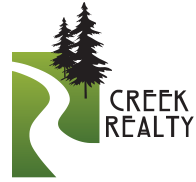If you have bought or sold a home in the last five years, you have probably had a discussion regarding Radon. As a refresher, radon is a naturally occurring gas that enters homes through the lowest rooms, and it is odorless as well as a colorless. The problem with this is, it is also the leading cause of lung cancer among non-smokers. The upside is that it’s inexpensive to test for, and reasonably inexpensive to correct in most homes. WIth January being Radon Awareness Month, it’s also a great time to test and talk about Radon in Minnesota. For a quick look, check out this video from Minnesota Department of Health below on the risks of Radon in your home.
Why January?
Radon exposure risk is greatest in our homes when there’s less airflow – this means the coldest months of the year are likely to show the highest concentrations of radon in your home. Testing now helps to identify a problem and correct it, rather than testing another time and getting a comforting test result that is not accurate.
What is a “safe” level of Radon?
The Enironmental Protection Agency, and Minnesota Department of Health will advise consumers that there is no “safe” level of Radon, though it is recommended that homeowners mitigate radon in the home if test results show a level of 4 picocuries per liter (pCi/L). For comparison, the air outside our homes generally has 0.4 pCi/L. Even if testing shows your household numbers 2-4 pCi/L in a test (EPA Publication “Basic Radon Facts” EPA 402/F-16/002 | July 2016).
Home Testing is EASY!
If it’s been a while since you tested, consider testing again as the Minnesota Department of Health recommends testing every 2-5 years. Even if you have a radon mitigation system currently installed, this is a good check to ensure it is working properly. Many counties in Minnesota offer free or reduced tests, so check the MDH website. To see if your county is one of these, check the list of county contacts HERE (Dakota County residents can pick up one free test kit from county service centers). If your county does not participate in a free test program, they can be purchased for less than $30 at local home improvement stores like Home Depot or Menards.
Once you’ve got a test, all you have to do is place it as instructed and leave it undisturbed for the recommended time. When the time is up, you package it and send it in for results. For a more thorough look, check out the MDH page on Radon testing. If the levels are higher than 2 pCi/L, you should perform a more thorough test using calibrated equipment; this can be done by most home inspection companies as well as Radon mitigation contractors. Laws were recently enacted that required licensure of all Radon measurement and mitigation professionals in Minnesota, but due to court cases as of January 2019, those are not being enforced. It’s my experience in recent years that testing with electronics typically costs about $150-200, and many installers will waive the inspection amount if a radon system is installed.
Correcting the Problem (Mitigation)
If you determine through initial testing that the level of radon in your home requires corrective measures, you can expect a system to cost $1,500-2,000 for most homes. This consists of the contractor cutting a hole in the foundation/slab to insert a 4″ PVC pipe into. This is then routed outside of the home and the gas is exhausted above the roofline. In some cases, it is possible to run the system inside the home through a closet or other vertical space, but the cost for installation is roughly double in my experience.
Once complete, a radon system will look and function like the images and diagrams below (in most cases).

This is a typical installation of a mitigation system (Source MDH).

A view of the inside and outside of a typical radon mitigation system (Photo: K-State Research and Extension)
What to expect following correction
If you have a system installed, your contractor will be working towards getting the level of radon down to 1.9 pCi/L or lower. Typical indoor air is 1.3 pCi/L, so while it is not likely to go to zero at any time, reducing below 2 is considered to be reducing the risk to reasonable levels. A mitigation system will have a tube on the side of the interior components that looks like a red “J” – this is called a u-tube manometer, and indicates the system is properly functioning. Depending on how your manometer is set up, it will read either like a forwards or backwards J; if it reads as a U, then the system is de-pressurized and not functioning properly. In this case, you should call the installer to correct.
As above, it’s a good idea to ensure proper function with a secondary test in the form of a passive test or continuising electronic monitoring every 2-5 years.
How Creek Realty can help
Since many buyers, and sometimes sellers, deal with radon testing and mitigation as a part of a sale, I’m familiar with the ins and outs and have names of inspectors and radon mitigation companies my clients have had good luck with. If you are in need of these resources, call me to discuss the best options in your area.
